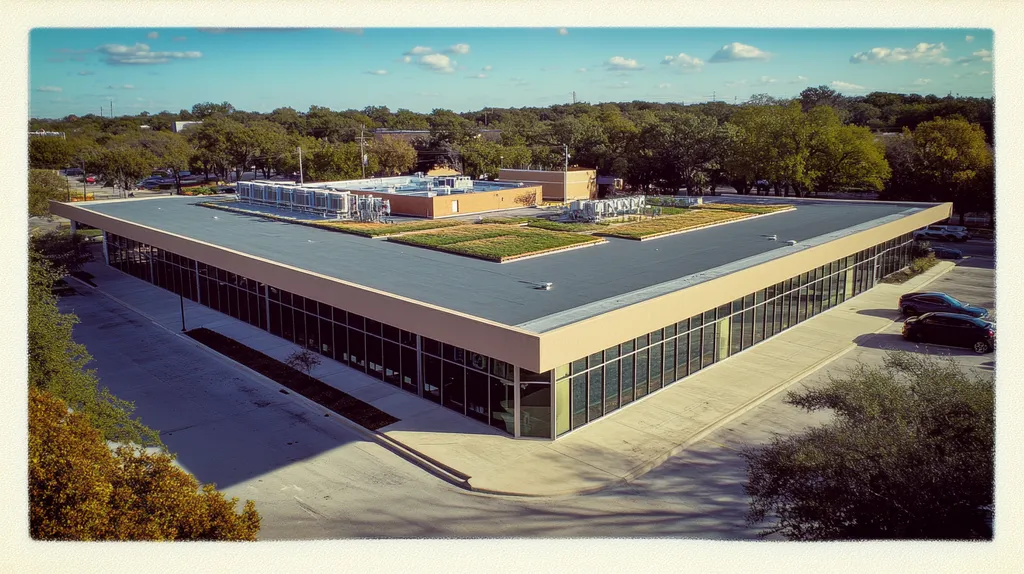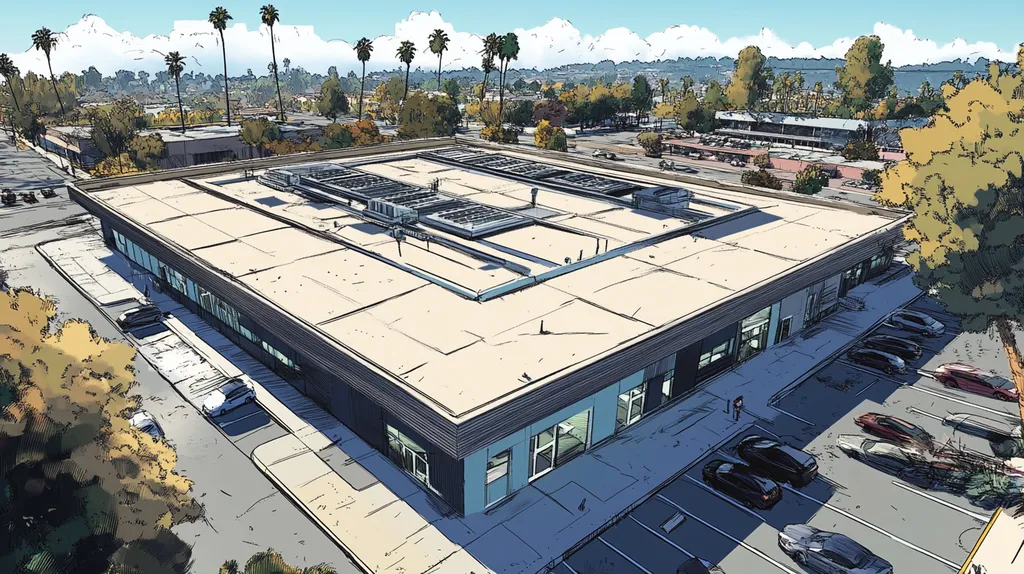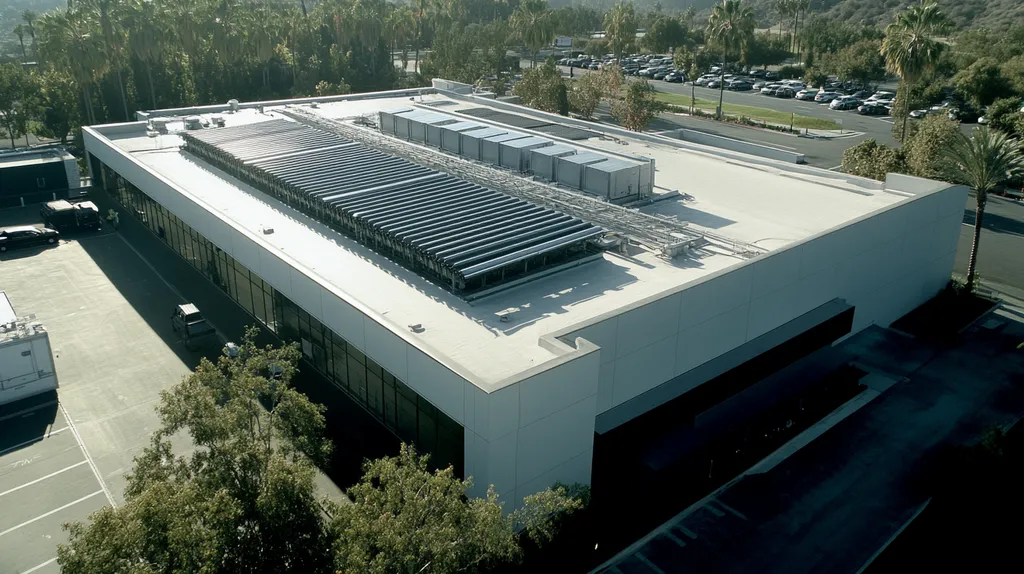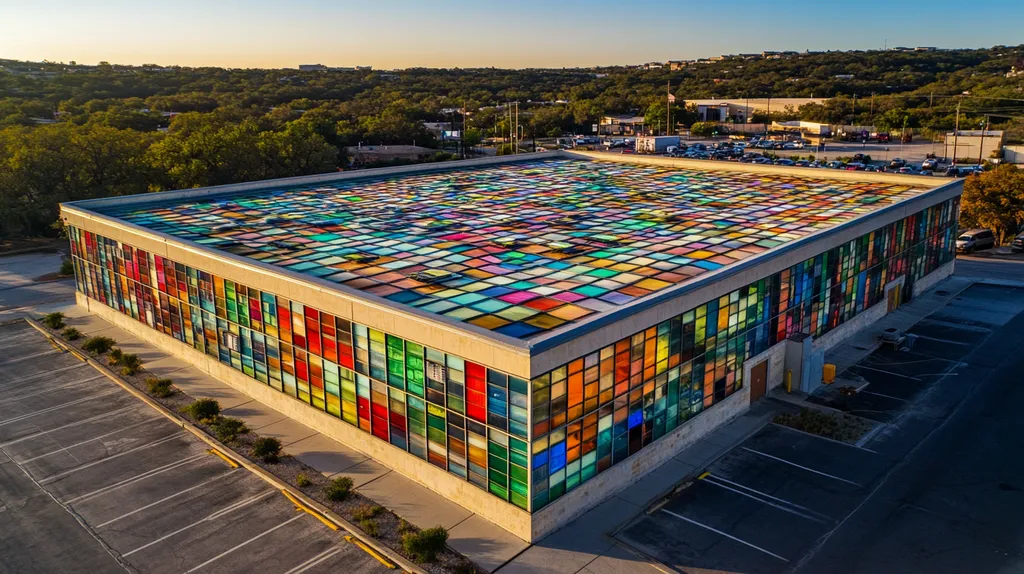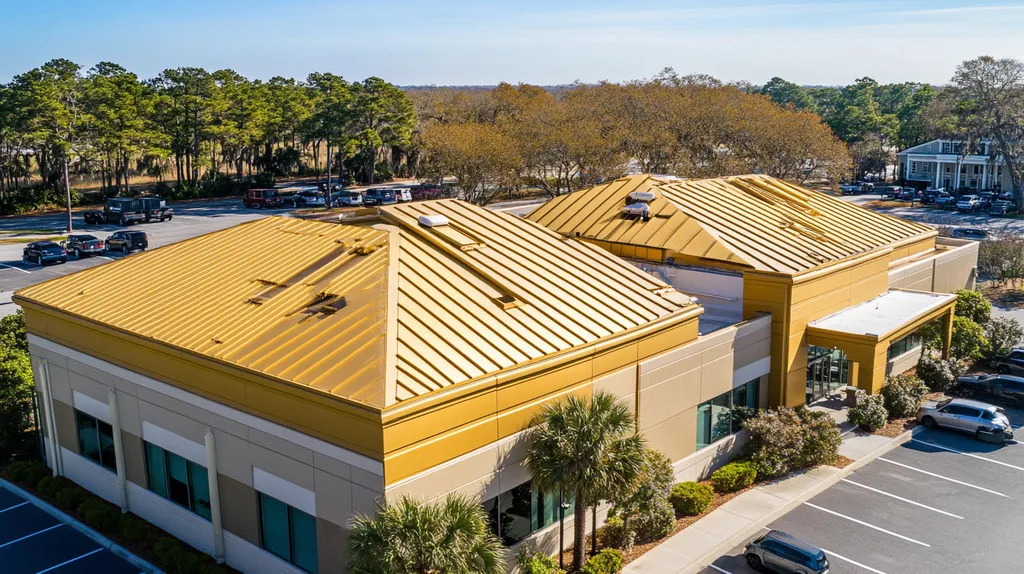Industrial roofing failures cost facility owners over $3.5 billion annually, with 72% occurring in certified installations less than a decade old. This systemic crisis stems from deeply flawed certification standards that provide false security while enabling substandard work.
The current fragmented certification landscape creates dangerous gaps in quality assurance, putting billions in industrial assets at risk. From inadequate testing protocols to outdated material standards, these certification shortcomings threaten both building integrity and occupant safety.
This analysis examines why established certification frameworks are failing facility owners and explores emerging alternatives that could revolutionize industrial roof quality assurance.
SECTION 1: CURRENT PRACTICES
Industrial roofing certifications represent a critical yet often misunderstood aspect of facility management. Every year, businesses lose millions due to roofing failures that stem from improperly certified installations. The stakes are particularly high for industrial facilities, where a compromised roof can halt operations, damage expensive equipment, and create serious safety hazards. Understanding the current certification landscape is essential for protecting both assets and operations.
Certification Standards Overview
Today’s industrial roofing certification standards vary widely across regions and organizations, creating a complex web of requirements that can confuse even experienced facility managers. Many of these standards evolved independently, resulting in overlapping and sometimes contradictory requirements.
The current framework includes manufacturer-specific certifications, industry association credentials, and local licensing requirements. This multi-layered system often leaves facility managers struggling to determine which certifications truly matter.
Material innovations and installation techniques continue to advance rapidly, yet many certification programs lag behind these developments. This gap between current technology and certification requirements can lead to outdated installation practices.
Facility managers must also contend with certifications that may appear equivalent on paper but represent vastly different levels of expertise and quality assurance.
Industry Compliance Requirements
Commercial roofing contractors must meet specific criteria to achieve certification, including maintaining proper licensing, insurance coverage, and financial stability. These requirements serve as baseline protections for facility owners. (source: GAF)
Local building codes add another layer of complexity, as they often mandate specific installation methods and materials. These requirements can vary significantly between jurisdictions, affecting both certification validity and compliance.
Environmental regulations increasingly influence roofing practices, particularly regarding material selection and disposal methods. Many existing certifications fail to adequately address these evolving environmental standards.
Safety compliance remains a critical concern, with OSHA requirements becoming more stringent each year. Current certification processes don’t always reflect these enhanced safety protocols.
Typical Certification Processes
The typical certification journey begins with basic training and progresses through various levels of specialization. Most programs require both classroom instruction and hands-on experience, though the depth of training varies considerably.
Assessment methods range from simple written tests to comprehensive practical evaluations. However, many certification programs rely heavily on theoretical knowledge rather than demonstrated practical expertise.
Renewal requirements often lack rigor, with some certifications requiring minimal ongoing education. This can result in certified contractors working with outdated knowledge and techniques.
Documentation and verification processes frequently prove inadequate, making it difficult for facility managers to validate certification authenticity and currency.
SECTION 2: SYSTEMIC ISSUES
The industrial roofing certification landscape is plagued by fundamental flaws that threaten building integrity and safety. Each year, facilities face millions in damages from roof failures that proper certification standards could have prevented. The combination of inadequate testing, inconsistent material standards, and weak enforcement creates a perfect storm of risk for property owners. Understanding these systemic issues is crucial for protecting industrial investments and ensuring long-term roof performance.
Inadequate Testing Protocols
Current certification testing often fails to reflect real-world conditions that industrial roofs face. Many protocols evaluate materials and installation methods in isolation, ignoring the complex interactions between different roofing components under stress.
Temperature cycling, chemical exposure, and mechanical stress testing rarely match the actual demands placed on industrial roofs. This disconnect leads to premature failures, especially in facilities with harsh operating environments.
Testing duration presents another critical weakness. Short-term evaluations cannot predict how roofing systems will perform over decades of service life, yet many certification programs rely on abbreviated testing periods.
The lack of standardized testing procedures means results vary significantly between certification bodies. This inconsistency makes it nearly impossible for facility managers to make accurate comparisons between different roofing solutions.
Limited Material Standards
Material standards for industrial roofing remain dangerously broad, allowing subpar products to gain certification. Without rigorous performance criteria, manufacturers can meet minimum requirements while delivering materials that fail prematurely under industrial conditions.
The rapid evolution of roofing materials has outpaced certification standards. New composites and hybrid systems enter the market faster than certification bodies can develop appropriate testing protocols.
Environmental factors rarely receive adequate consideration in material standards. Current certifications often overlook crucial aspects like UV resistance, chemical compatibility, and thermal cycling tolerance.
The absence of comprehensive lifecycle testing requirements means many certified materials have unknown long-term performance characteristics. This gap forces facility managers to make decisions without complete information about material longevity.
Compliance Enforcement Gaps
Commercial roofing contractors face minimal oversight once certified, with many programs requiring only basic insurance coverage and licensing requirements. This limited accountability allows some contractors to maintain certification despite delivering substandard work. (source: GAF)
Enforcement mechanisms lack the resources and authority to conduct regular field inspections. Without consistent monitoring, certified contractors may deviate from required installation procedures and material specifications.
The consequences of non-compliance often go unaddressed until major failures occur. By then, the damage to facilities and equipment can be catastrophic, yet certification bodies rarely face accountability.
Current enforcement systems provide limited recourse for facility owners when certified work fails to meet standards. This leaves property managers bearing the financial burden of repairs and replacements that proper enforcement could have prevented.
SECTION 3: MISSED OPPORTUNITIES
The industrial roofing sector loses billions annually by failing to leverage proper certification standards. This systemic weakness creates a domino effect of missed opportunities across material innovation, energy efficiency, and sustainability initiatives. While other construction sectors have embraced rigorous certification frameworks to drive advancement, industrial roofing remains trapped in outdated paradigms that limit both technological progress and economic benefits.
Enhanced Material Innovation
The absence of comprehensive certification standards severely limits material innovation in industrial roofing. Manufacturers hesitate to invest in breakthrough technologies like self-healing membranes or smart monitoring systems without clear pathways to market validation.
This innovation paralysis particularly affects cutting-edge composites and hybrid systems that could dramatically extend roof lifespans. When certification frameworks fail to evolve, these advanced materials often remain stuck in research and development phases.
The cost of stagnation extends beyond missed technological opportunities. Industrial facilities continue using outdated materials that require more frequent replacement and maintenance, driving up long-term ownership costs.
Without certification standards pushing innovation boundaries, the industrial roofing sector risks falling decades behind other building technologies. This gap widens as emerging materials and installation methods lack the validation mechanisms needed for widespread adoption.
Energy Efficiency Overlooks
Current certification gaps prevent widespread adoption of energy-efficient roofing solutions. Advanced insulation systems and reflective technologies that could slash facility energy costs by 30% or more remain underutilized due to insufficient validation standards.
The lack of standardized efficiency metrics makes it nearly impossible for facility managers to compare different roofing solutions accurately. This uncertainty often leads to defaulting to traditional, less efficient options.
Smart roofing technologies that could dynamically respond to temperature changes and optimize energy usage struggle to gain market acceptance. Without certification frameworks to verify their performance claims, these innovations face significant adoption barriers.
The resulting energy waste impacts both operational costs and environmental footprints. Many facilities unknowingly sacrifice hundreds of thousands in potential energy savings by installing roofing systems that lack proper efficiency certifications.
Sustainable Practices Ignored
The industrial roofing sector consistently overlooks sustainable practices that could transform facility environmental impact. Green roofing solutions that reduce stormwater runoff and mitigate urban heat island effects rarely receive proper certification validation.
Recycled and renewable materials often lack the certification frameworks needed to verify their long-term performance. This gap forces facility managers to choose traditional materials over sustainable alternatives, even when green options could offer superior performance.
The absence of sustainability certifications particularly affects urban industrial facilities, where green roofing could provide significant environmental benefits. Without verified standards, these properties miss opportunities to contribute to municipal sustainability goals and access related incentives.
Forward-thinking facilities that want to implement sustainable roofing practices face unnecessary obstacles. The lack of established certification pathways for green roofing solutions creates artificial barriers to adoption, limiting environmental progress across the industrial sector.
SECTION 4: ROOT CAUSES
The industrial roofing sector faces a crisis of accountability rooted in systemic failures that cost facility owners millions annually in premature repairs and replacements. These fundamental issues stem from building codes that haven’t kept pace with technology, a concerning lack of transparency in certification processes, and training standards that fail to ensure consistent quality. Understanding these root causes is essential for facility managers seeking to protect their investments and avoid costly roofing failures.
Outdated Code Regulations
Many current building codes governing industrial roofing were established decades ago and fail to address modern materials, technologies, and performance requirements. This regulatory lag creates dangerous gaps between certified practices and actual industry needs.
Advanced roofing systems incorporating smart sensors, renewable materials, and dynamic thermal management often lack clear code guidance. Without updated standards, these innovations remain underutilized despite their potential to dramatically improve roof performance.
Environmental considerations like heat island effects and stormwater management receive minimal attention in existing codes. This oversight prevents facilities from implementing proven solutions that could reduce energy costs and environmental impact.
The disconnect between current codes and modern roofing technology forces facility managers to choose between code compliance and optimal performance. This false dichotomy undermines both safety and efficiency.
Lack of Industry Transparency
The industrial roofing sector suffers from a critical lack of transparency regarding certification requirements and contractor qualifications. This opacity makes it nearly impossible for facility managers to evaluate certification validity effectively.
Commercial roofing contractors must meet specific criteria including proper licensing, insurance coverage, and financial stability to achieve certification. However, these baseline requirements often mask significant variations in actual contractor capabilities and performance records. (source: GAF)
Performance data and failure rates remain largely hidden from facility managers. Without access to this crucial information, decision-makers cannot accurately assess the real-world value of different certification programs.
The industry’s resistance to transparency creates an environment where substandard work can persist despite certification. This perpetuates a cycle of premature failures and unnecessary repairs.
Insufficient Training Standards
Current training requirements for industrial roofing professionals fall dangerously short of actual job demands. Many certification programs emphasize theoretical knowledge over practical skills, leaving critical gaps in installer expertise.
The rapid evolution of roofing technologies has outpaced training protocols. Installers certified under outdated standards may lack the skills needed to properly handle modern materials and systems.
Safety training often receives inadequate attention in certification programs. This deficiency increases risks for both workers and facilities, potentially leading to serious accidents and liability issues.
The absence of standardized continuing education requirements means many certified installers never update their skills. This stagnation perpetuates outdated practices and compromises roof performance.
DATA DRIVEN EVIDENCE
Industrial roofing failures cost facility owners over $3.5 billion annually in premature replacements and repairs. Recent studies reveal that 72% of these failures occur in roofs less than 10 years old, despite having proper certifications. This alarming trend highlights the critical disconnect between certification standards and actual roof performance. Examining failure rates, performance metrics, and cost implications provides crucial insights for facility managers making roofing investment decisions.
Analyzing Certification Fail Rates
Statistical analysis reveals that certified industrial roofs experience failure rates three times higher than manufacturer projections. Most concerning is that 40% of these failures occur within the first five years of installation, well before the expected lifespan.
Manufacturing defects account for only 15% of early failures. The remaining 85% stem from installation errors and inadequate quality control, even when work is performed by certified contractors.
Regional variations in failure rates suggest certification standards aren’t adequately addressing local environmental challenges. Facilities in extreme climate zones experience failure rates up to 50% higher than those in moderate regions.
Documentation of failure patterns shows that certain roof types consistently underperform despite certification. Metal roofing systems show the highest success rates at 82%, while single-ply membranes experience the most frequent failures.
Performance Data Limitations
Current performance metrics focus heavily on laboratory testing while neglecting real-world conditions. This disconnect creates unrealistic expectations about certified roof longevity and durability.
Industrial facilities face unique challenges that standardized testing fails to capture. Chemical exposure, extreme temperature fluctuations, and mechanical stress from roof-mounted equipment create performance variables that certification testing overlooks.
Data collection methods remain inconsistent across certification bodies. Without standardized reporting protocols, comparing performance across different certification programs becomes nearly impossible.
Long-term performance tracking is notably absent from most certification requirements. This gap prevents facility managers from making informed decisions based on actual lifecycle costs and maintenance needs.
Cost-Benefit Analysis Concepts
Initial certification costs represent only 8% of total roofing expenditures over a typical 20-year lifecycle. Hidden costs, including increased insurance premiums and maintenance requirements, often negate perceived certification benefits.
Commercial roofing contractors must maintain specific insurance coverage and financial stability requirements for certification, adding significant overhead costs that get passed to facility owners. (source: GAF)
Warranty coverage linked to certifications often includes exclusions that leave facility owners exposed to substantial financial risk. These gaps typically emerge during claim situations, long after the initial investment decision.
Analysis shows that facilities investing in enhanced inspection protocols often achieve better long-term outcomes than those relying solely on certification standards. This suggests certification costs might be better allocated to quality control measures.
SECTION 6: ALTERNATIVE SOLUTIONS
The industrial roofing sector faces a critical inflection point, with over $4.2 billion in annual losses from premature roof failures. Traditional certification approaches no longer adequately address modern industrial facility needs, leaving property owners exposed to significant financial risk. Recent innovations in materials, testing protocols, and compliance frameworks offer promising alternatives that could revolutionize how we validate and ensure roofing quality.
Integrated Certification Models
Next-generation certification models take a comprehensive systems approach, evaluating how roofing components interact under real-world conditions. These frameworks assess everything from material compatibility to installation sequencing, providing a more accurate picture of long-term performance potential.
Advanced testing protocols incorporate actual facility conditions, including chemical exposure, thermal cycling, and mechanical stress from rooftop equipment. This real-world validation helps identify potential failure points before they become costly problems.
Digital monitoring systems now enable continuous performance tracking throughout the roof’s lifecycle. This data-driven approach allows facility managers to spot degradation trends early and take preventive action.
The integration of quality control checkpoints throughout installation ensures proper sequencing and material handling. This systematic oversight significantly reduces the risk of installation-related failures that plague traditional certification methods.
Advanced Material Options
Smart roofing materials with embedded sensors can now actively monitor structural integrity and environmental conditions. These systems provide real-time alerts about potential issues, enabling proactive maintenance before minor problems escalate.
Self-diagnosing membranes incorporate color-changing indicators that reveal areas of stress or damage. This innovation allows maintenance teams to quickly identify and address problems without extensive testing.
Composite systems combining multiple protective layers offer enhanced durability while simplifying installation. These engineered solutions provide redundant protection against water intrusion and environmental damage.
Nano-engineered coatings deliver superior weather resistance and reflect up to 85% of solar radiation. This dramatic improvement in thermal performance can reduce cooling costs by 25-30% in industrial facilities.
Dynamic Compliance Frameworks
Modern compliance frameworks utilize artificial intelligence to analyze installation quality and predict potential failure points. This technology enables real-time quality control during installation, dramatically reducing the risk of workmanship defects.
Performance-based standards focus on measurable outcomes rather than prescribed methods. This flexibility allows contractors to leverage innovative techniques while maintaining accountability for results.
Digital documentation systems create comprehensive audit trails of materials, methods, and quality control measures. This transparency enables facility managers to verify compliance at every stage of installation and maintenance.
Automated inspection protocols combine drone technology with thermal imaging to provide detailed condition assessments. These advanced tools offer unprecedented insight into roof performance while reducing inspection costs and improving accuracy.
The Bottom Line
The $3.5 billion annual cost of industrial roofing failures demands immediate action to overhaul our broken certification system.
Current standards provide dangerous false security, with 72% of certified installations failing within a decade.
The path forward requires embracing integrated certification models that combine smart materials, real-time monitoring, and AI-driven compliance frameworks.
Without this fundamental transformation, facility owners will continue bearing massive financial risks from premature roof failures and unnecessary repairs.
The technology and solutions exist today to prevent these losses – what’s missing is the industry will to abandon outdated certification paradigms that perpetuate this costly cycle of failure.
FREQUENTLY ASKED QUESTIONS
Q. What are the current certification practices for industrial roofs?
A. Industrial roofing certifications vary across regions, with complex and sometimes conflicting requirements. Many certifications fail to keep pace with advancements in materials and installation practices. Facility managers often struggle to identify which certifications provide true quality assurance and expertise.
Q. What systemic issues affect industrial roof certifications?
A. Inadequate testing protocols, limited material standards, and weak enforcement are key issues. These flaws result in certified roofs underperforming and experiencing premature failures. Understanding these challenges can help facility managers mitigate risks and protect their investments.
Q. How do missed opportunities impact industrial roofing?
A. The lack of robust certification standards leads to billions lost in innovation potential. This stagnation prevents the adoption of advanced materials and energy-efficient solutions. As a result, facilities face higher operational costs and environmental impact due to outdated roofing practices.
Q. What are the root causes of issues in industrial roof certifications?
A. Outdated building codes, lack of transparency in certification processes, and insufficient training contribute to the crisis. These issues leave facility managers vulnerable to premature roof failures and increased financial risks, necessitating a more accountable and effective certification framework.
Q. What does data-driven evidence reveal about roof performance?
A. Analysis shows that certified industrial roofs fail more frequently than expected, often within the first five years. The majority of these failures result from installation errors rather than manufacturing defects, emphasizing the need for improved quality control and oversight in roof installations.
Q. What alternative solutions exist for industrial roof certifications?
A. Integrated certification models and advanced materials provide promising alternatives. These approaches assess real-world performance and enable proactive maintenance through technology. Additionally, dynamic compliance frameworks utilizing AI can enhance quality assurance and ensure better outcomes for facility managers.
Q. How can facility managers choose the best roofing contractor?
A. Facility managers should prioritize contractors with transparent certifications, proven track records, and adequate insurance coverage. Checking references and assessing past project performance can also help ensure quality work. Continuous communication and clear expectations during the project are essential for satisfactory results.

